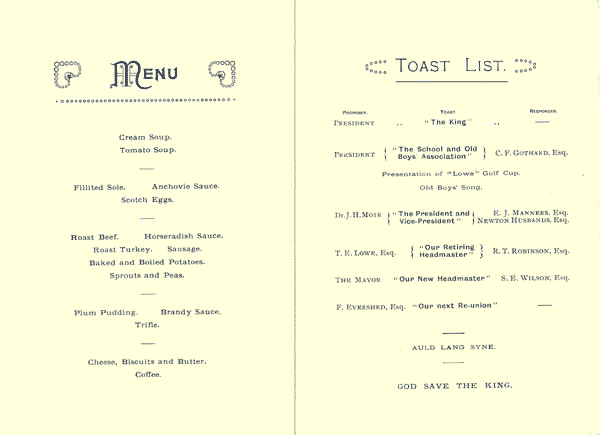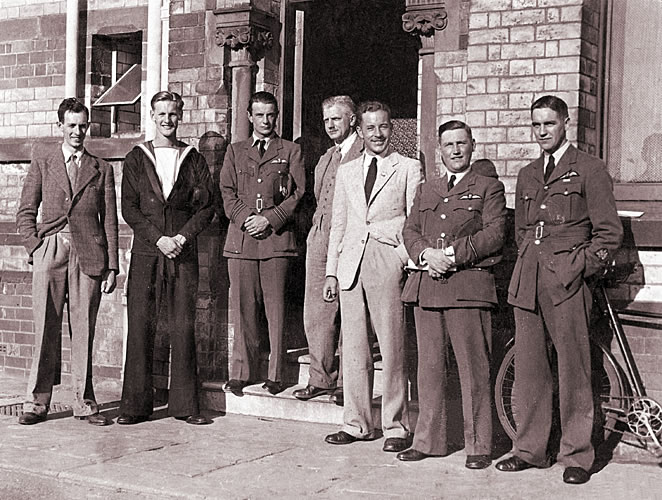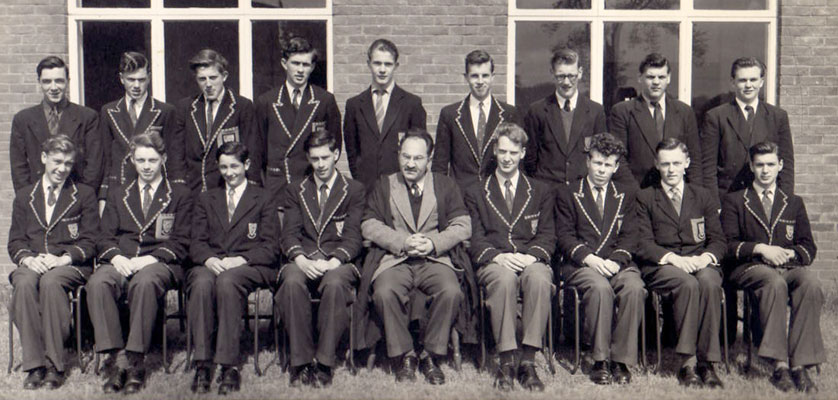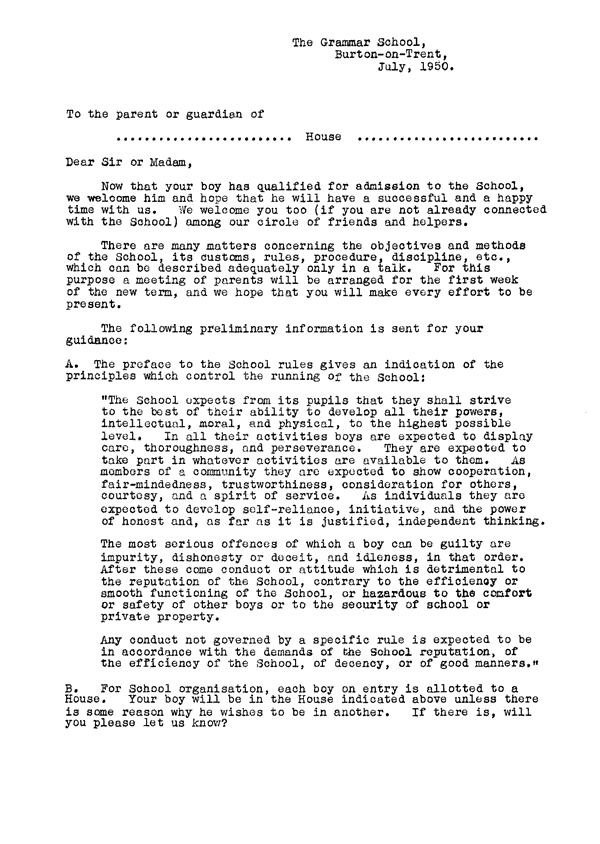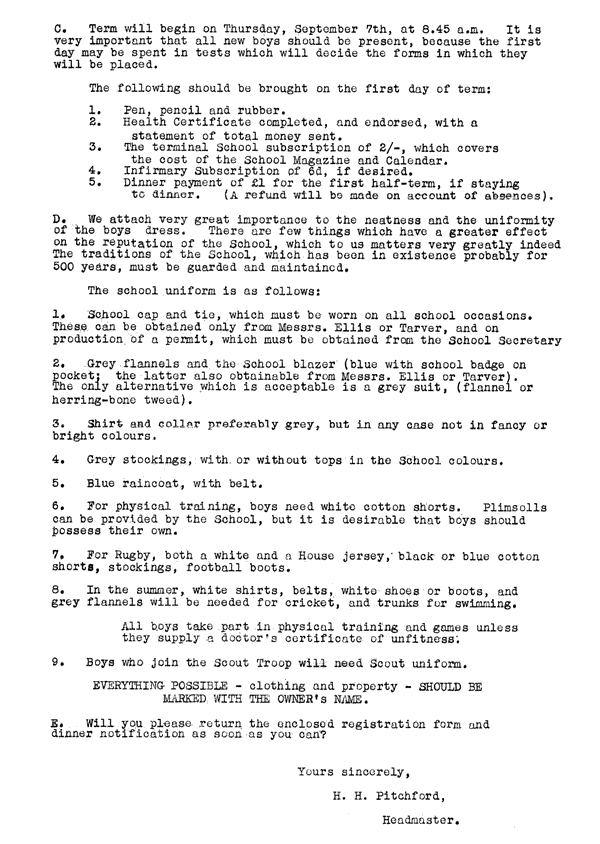Ted Warren (1936–42): School Memories
 School started with assembly in the hall under the eagle eye of Tom Parkin. The Headmaster read a prayer, a hymn was sung, notices read and then quietly and orderly we left for our classrooms. Breaktime we went across Bond Street to the Rawlings sisters (Gertie & Maisie) where if you were lucky, you bought a doughnut or a twist. Back to school until Dinner time from 12:00am to 1:30pm and finally home at 4:00pm
School started with assembly in the hall under the eagle eye of Tom Parkin. The Headmaster read a prayer, a hymn was sung, notices read and then quietly and orderly we left for our classrooms. Breaktime we went across Bond Street to the Rawlings sisters (Gertie & Maisie) where if you were lucky, you bought a doughnut or a twist. Back to school until Dinner time from 12:00am to 1:30pm and finally home at 4:00pm
The school had scholarship boys & fee payers. I remember lining up in the hall to pay Mr Marshall of Talbot Stein & Evershed. Fees per term were £5-5-0 if you lived in the Borough, and £7-7-0 if you lived outside. Uniform, which was strictly enforced, was either blue blazer, grey flannels, white or grey shirt with blue & red school tie, and blue cap with a broad red band at the back OR a grey suit. These had to be purchased at either Tarvers or Ellis & Sons.
For sports, in those days masters used to coach boys after school. Frank Read, swimming, Ron Illingworth, cricket & Jake Hammond, rugby. House matches were held on Saturday mornings and you were expected to attend wearing school caps and were punished if you forgot your cap.
Some of the outstanding students were:
P.C.H. Davies who was a fine sportsman, captaining the school at cricket, rugby and athletics. He set many school records, some were still held by him when the school ceased. Norman Dent became an English cross country runner.
Oscar Deville became a C.B.E. before being knighted for his services to industry. He is a very gifted man. John Dent was knighted for services to aviation & travel. On a sad note – N Carfoot, Tom Thorley & Peter Berry all died due to war service.
Some memories of the staff:
The Headmaster, Mr Frazer, died tragically in 1941. Deputy Head and Physics master Tom Parkin was feared in early years but respected in the 5th & 6th forms. ‘Cherry’ Major Orchard was a territorial so went to war in 1938-9, and returned to the school afterwards. Dai Davies – Woodwork and P/T Terrier with South Staffs, was also called up 1938-9, returning after war. Nicholson took us for Chemistry and Dai Hughes for English & Cricket. Frank Read took Maths & coached swimming. During the war he was C.O. 351 Squadron Air Training Corps . Ron Illingworth – Geography & coached cricket and was also an officer in 351 ATC. ‘Chasser’ Brown, History master, formed a League of Nations society which ceased when war broke out.
The famous H.H. Pitchford, who taugh both History and Geography, always carried a small case with him and wore a trilby hat. He ran the school bookshop for years with George Cooper and was eventually to become Headmaster. ‘Scraggy’ Shan taught French and had a viscious right hand. ‘Bunny’ Leighton also taught French and organised the school scouts. ‘Daddy’ Spooner taught Art. Monsieur Vinc was yet another French teacher but he resigned before the war and returned to Belgium where he died fighting for the Belgian Resistance. ‘Reggie’ Neale taught Biology and was a good rugby referee; he left to join the Navy; he did not come back to BGS but became a well known author. N. Crystal, who I can only just remember, came back to Burton after the war but he did not return to BGS being blinded and badly injured by bomb explosion due to his service with a bomb disposal unit. ‘Connie’ Illsley came to replace Neale as Biology teacher and was the first lady on staff. Lastly ‘the boy who never left’ BGS, George Cooper, gained a scholarship to BGS Higher School Certificate and entrance to university. Qualified and returned to teach at BGS for the whole of his long scholastic career; he taught Maths and helped to run the school bookshop.


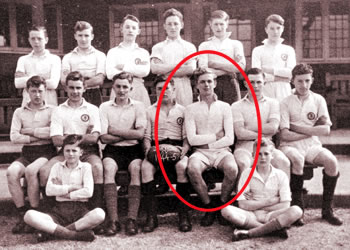 Having been bombed out in London’s East End in 1941, I was evacuated with my brother Dennis and my Mother to Newhall near Burton. We were billeted in a very small cottage in the back gardens of homes in Oversetts Rd. “Grandy Sabin one of the characters of Newhall was the tenant. He lived and slept in one downstairs room whilst we used all the other rooms. There was no bathroom and an outside toilet. The downstairs rooms must have been infested with cockroaches because if we returned home at night and switched the lights on there was a very large gathering of them in the middle of the floor! My primary school was in Newhall. In 1942 I had to take the London County Council entrance examination at the primary school and the paper was sent to the London Education Authority for assessment. Due to administrative delays my results were not processed until October 1942 and I was awarded a special place at Burton Grammar School; my London grammar school would have been Coopers Company Boys School in East London.
Having been bombed out in London’s East End in 1941, I was evacuated with my brother Dennis and my Mother to Newhall near Burton. We were billeted in a very small cottage in the back gardens of homes in Oversetts Rd. “Grandy Sabin one of the characters of Newhall was the tenant. He lived and slept in one downstairs room whilst we used all the other rooms. There was no bathroom and an outside toilet. The downstairs rooms must have been infested with cockroaches because if we returned home at night and switched the lights on there was a very large gathering of them in the middle of the floor! My primary school was in Newhall. In 1942 I had to take the London County Council entrance examination at the primary school and the paper was sent to the London Education Authority for assessment. Due to administrative delays my results were not processed until October 1942 and I was awarded a special place at Burton Grammar School; my London grammar school would have been Coopers Company Boys School in East London.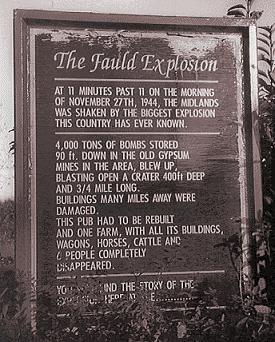 It was just after 11 o’clock on a foggy Monday morning,the 27th November 1944. As a ten year old boy I sat at my desk in ‘A’ room at the Burton Grammar School. I thought that I was about to faint. Without any noise at all my desk seemed to rise up towards me, or perhaps I was going down towards it. A very strange sensation was soon gone but quickly the whole class realised we had all experienced the same feeling. From the floor upstairs came a noise of the whole class there scrambling under their desks. Around lunchtime the rumours were well established and it was only later that we found out that the ‘Dump’ had gone up.
It was just after 11 o’clock on a foggy Monday morning,the 27th November 1944. As a ten year old boy I sat at my desk in ‘A’ room at the Burton Grammar School. I thought that I was about to faint. Without any noise at all my desk seemed to rise up towards me, or perhaps I was going down towards it. A very strange sensation was soon gone but quickly the whole class realised we had all experienced the same feeling. From the floor upstairs came a noise of the whole class there scrambling under their desks. Around lunchtime the rumours were well established and it was only later that we found out that the ‘Dump’ had gone up. On the way home I stopped to take train numbers but there was still a dense fog and we heard the endless sounds of emergency vehicles going to the local hospital that was just down the road from us. I remember the eerieness of everything drove me home.
On the way home I stopped to take train numbers but there was still a dense fog and we heard the endless sounds of emergency vehicles going to the local hospital that was just down the road from us. I remember the eerieness of everything drove me home. Sixty-eight people lost their lives in a bang which took out the crater, (which was some 90 feet deep and covering an area of 12 acres) in a second. A whole farm with buildings implements and stock vanished without trace. A thousand acres of topsoil was redistributed, some up to 11 miles away.
Sixty-eight people lost their lives in a bang which took out the crater, (which was some 90 feet deep and covering an area of 12 acres) in a second. A whole farm with buildings implements and stock vanished without trace. A thousand acres of topsoil was redistributed, some up to 11 miles away.
